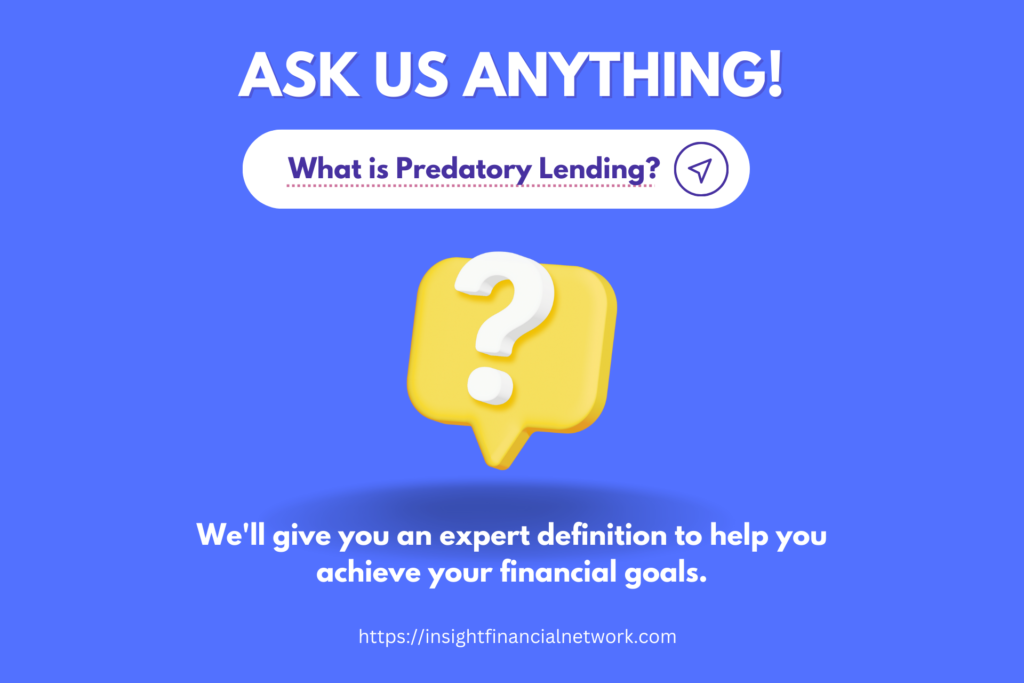Definition Explained with Real-life Examples and Strategies for Success
What is Predatory Lending? Here’s What You Should Know
Are you curious about the Predatory Lending definition that you’ve heard about lately? We’re here to help you unravel the mystery behind this financial practice. We will explore predatory lending, how it can impact your financial well-being, and what you need to know to protect yourself.
Stick around to gain insights that could potentially save you from falling victim to these harmful practices. Knowledge is power, and by the end of this post, you’ll be armed with the information you need to make the best financial decisions for yourself.
Here’s What You Will Find:
Predatory Lending Definition
Predatory lending refers to unethical and exploitative lending practices that prey on vulnerable borrowers, often leading them into a cycle of debt or financial ruin.
These practices usually involve lenders taking advantage of borrowers’ lack of financial knowledge, urgency, or desperate circumstances and trapping them in loans with excessively high-interest rates, hidden fees, or unfavorable terms.
Predatory loans are typically characterized by one or more of the following:
High-interest rates
Predatory lenders often charge exorbitant interest rates, far higher than those reputable lenders offer. These rates make it difficult or impossible for borrowers to repay their loans, leading to a vicious cycle of debt.
Hidden fees and penalties
Predatory loans may include hidden fees or penalties that the borrower is unaware of when signing the loan agreement. These fees can significantly increase the total cost of the loan, making it even more challenging for the borrower to repay.
Unnecessary add-ons
Some predatory lenders may try to sell borrowers additional products or services that are not necessary, such as insurance policies, as part of the loan agreement. These add-ons can inflate the total cost of the loan.
Targeting vulnerable borrowers
Predatory lenders often target borrowers who are in financial distress, have poor credit, or lack financial knowledge. These borrowers may feel they have limited options for obtaining credit, making them more susceptible to predatory practices.
Loan flipping
This practice involves repeatedly refinancing a borrower‘s loan, often with little or no benefit to the borrower. Each time the loan is refinanced, the lender may charge additional fees, increasing the overall cost of the loan.
Balloon payments
Predatory loans may require a large, lump-sum payment at the end of the loan term, known as a balloon payment. Borrowers may struggle to make this payment, potentially leading to default or the need for refinancing at unfavorable terms.
By understanding the characteristics of predatory lending, you can be better equipped to identify and avoid these harmful practices when seeking credit. It’s essential to be vigilant, ask questions, and seek advice from trusted sources to ensure you’re making the best financial decisions for your situation.

Example:
Let’s take a look at a real-life example of predatory lending involving payday loans.
Meet Jane, a single mother working a minimum-wage job to support her two children. Jane’s car breaks down unexpectedly, and she needs $500 for repairs to ensure she can continue commuting to work. With a low credit score and no savings, Jane finds it difficult to secure a loan from traditional lenders.
In her desperation, she turns to a payday loan company that promises quick cash without a credit check. Jane borrows the $500, agreeing to repay the loan plus a $75 fee within two weeks (her next payday). The loan agreement includes an annual percentage rate (APR) of 391%, but Jane, lacking financial knowledge, doesn’t realize the implications of such a high rate.
Jane cannot repay the loan in full when her next paycheck arrives, as she needs the money to cover her living expenses. The payday lender offers her the option to roll over the loan, paying only the $75 fee and postponing the repayment of the principal amount for another two weeks. Jane agrees, not realizing that this starts a cycle of debt.
Over the next few months, Jane repeatedly rolls over the loan, incurring an additional $75 fee each time. Ultimately, Jane pays $450 in fees on top of the original $500 loan, causing significant financial strain on her already tight budget.
This example highlights how predatory lending practices, such as high-interest rates and targeting vulnerable borrowers, can trap individuals like Jane in a cycle of debt and exacerbate their financial struggles.
Final Thoughts
Understanding predatory lending definition is crucial to safeguarding your financial well-being. With this knowledge, you can recognize and avoid falling victim to unethical lending practices that could lead to a debt and financial hardship cycle.
Always remember to borrow responsibly, carefully assess your loan options, and seek advice from trusted sources when in doubt. By doing so, you can make well-informed financial decisions that support your long-term goals and financial stability.

